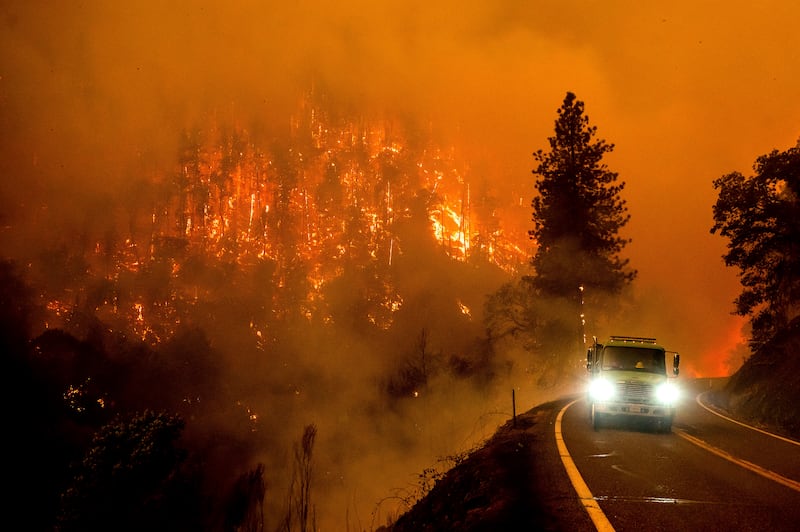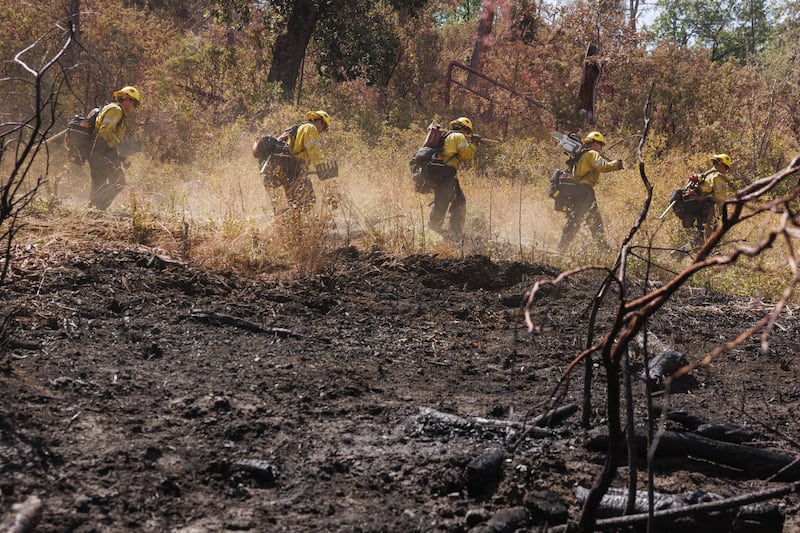Although serious, the wildfire on Killiney Hill last week, just after the bigger fire at Crone Woods near Enniskerry, seems relatively paltry compared to the wildfires across London that occurred at the same time and which destroyed more than 40 properties. Thankfully, the wind at the time across London was relatively calm, otherwise there could have been a truly catastrophic outcome.
Meanwhile, the wildfires across the European continent since the start of the year are now four times the normal average over the past 15 years for the same period. The July fires in California – the Oak fire, the Yosemite National Park fire and now the McKinney fire – have stirred headlines across the United States. At the time of writing, in just 12 hours, the McKinney fire had grown to 7,284 hectares (18,000 acres), equivalent to more than 10 Phoenix Parks, or seven times the area of Dublin Airport.
But even this seems small compared to the combined Hermit’s Peak and Calf Canyon fires that merged to burn 138,402 hectares (342,000 acres) three weeks ago in New Mexico. Bigger still, the Corrientes wildfire destroyed 898,402 hectares (2.22 million acres) last February in Argentina – about the size of Clare and Galway combined. The zoomable map of live satellite monitoring for the Nasa Fire Information for Resource Management System (FIRM, at firms.modaps.eosdis.nasa.gov/map/) shows active wildfires across the world, most strikingly in the grasslands and rain forests across the Tropic of Capricorn.
While the rapidly deteriorating management of our global climate is directly threatening fires in our woodlands and forests, indirect climate consequences such as insect endemics are also making tree canopies vulnerable. Poor forestry management has increased susceptibility, as we actively suppress wildfires to protect life and property. Our Department of Agriculture, Food and the Marine requires the beneficiaries of grants for woodlands and forests to proactively maintain their plantations, including an obligation to replant after fire damage. It recommends insurance against loss and re-establishment costs.
READ MORE

There is a growing realisation, notably in California, that older traditions should be reinstated, using native cultural methods of managing wildfire vulnerability using frequent low-intensity fires to naturally reduce overgrowth and risk of major fire outbreak. We have a goat herd in Howth to reduce the risk of gorse fire, and there is a call to likewise introduce a herd in Killiney. What technology innovations are also being used throughout the world for wildfire management?
An obvious foundation is a wireless infrastructure, not only to interconnect remote sensors, cameras and monitors, but more importantly to help fire crews communicate and be geo-located in the midst of fires. However, the costs of deploying cellular systems across wide swathes of forest are usually prohibitive, as well as raising the potential fire risk from permanent electrical equipment. A better approach is now promised overhead by satellite broadband systems, including by the Starlink system of Elon Musk’s SpaceX. Suitably low-powered sensors and monitors can be driven at ground level from renewable power, reducing fire risk.
As broadband becomes available, manned lookout towers are being replaced by webcam feeds with automatic vision recognition systems, trained to spot smoke outbreaks. In parts of California and Colorado, machine-learning systems can now predict the direction and spread of wildfires in real-time, reducing risks for fire fighters and accelerating responses to an outbreak.
Remotely controlled water-spray units and robotic tree-harvesting machines are being widely tested and trialled. Scion, a New Zealand government research body, in partnership with the University of Canterbury has demonstrated a two-armed “swinging” robot harvester tool that can move from tree to tree without touching the ground, intended to help thin out otherwise inaccessible dense tree areas.
Drones are routinely being used – including by Dublin Fire Brigade – to map and give situational awareness of the intensity of wildfires, flying lower and more safely than manned helicopters. Thermal cameras can penetrate smoke-obscured areas to identify hot spots, and spot heat signatures from crew members and the public at risk. Controlled fires can be started by deliberate aerial ignition. Drones can also be used for mapping flights during night time, when flying an aircraft over a wildfire would be unacceptably dangerous.

Although drone systems are generally too lightweight to effectively carry water and fire retardants, small drone aircraft with a carrying capacity of 5,000 litres are being trialled in Spain and elsewhere. This capacity compares favourably with that of a classical fire brigade tender engine. The “Bambi” water baskets carried by the helicopters of the Air Corps No 3 Wing for fire fighting carry about 1,200 litres of water. Meanwhile, Airbus has recently trialled a 20,000 litre water bomb conversion kit for its A400 military transporter with the Spanish Air Force, reasoning that it is cheaper to augment existing aircraft for fire fighting, than the expense of procuring a purpose-built fleet.
Wildfire fighting is dangerous, often low paid (sometimes even relying on prison inmates to augment professional crews), and historically has been woefully underfunded by governments and administrations. Our climate crisis is brutally demanding a reassessment.
















